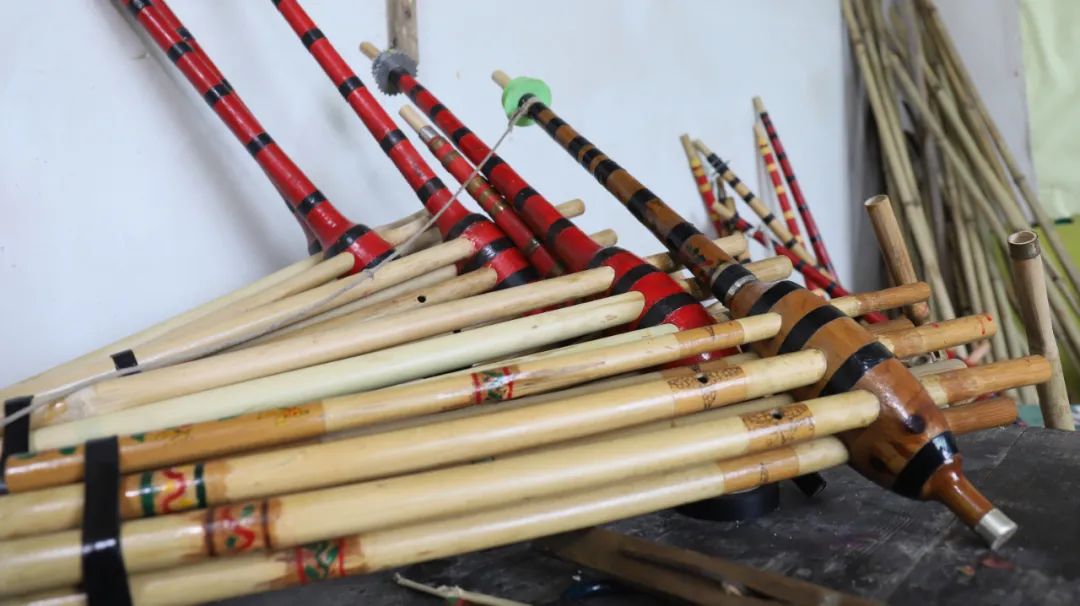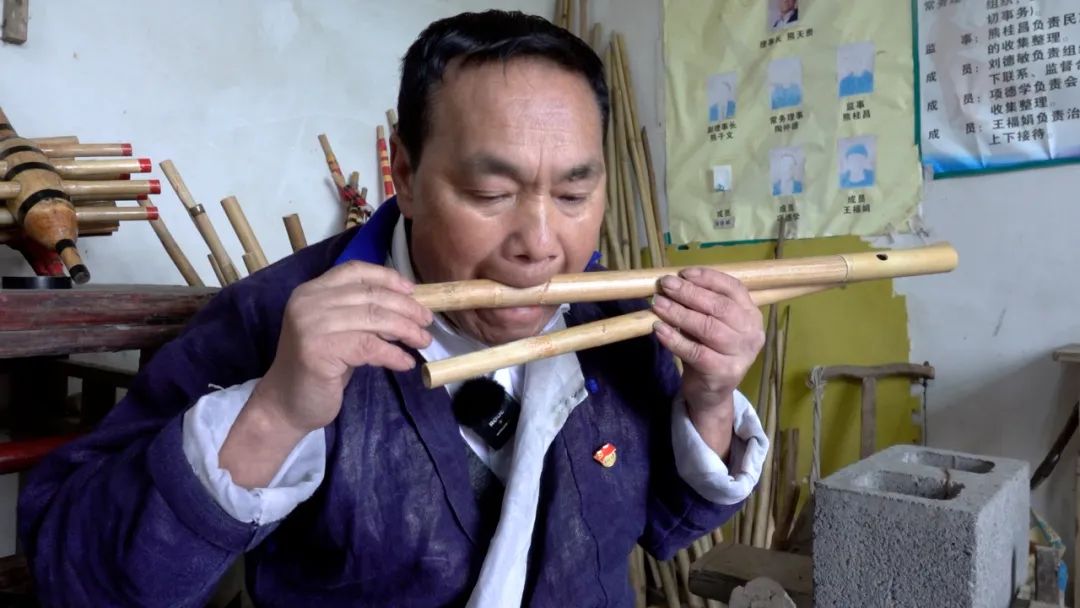Everything enters Shengge, and Shengle is everywhere
Lu Sheng is a traditional and ancient scout musical instrument, accompanied by the history of the Miao people for thousands of years. It can be said that in their social life, "everything has entered Shengge and Shengle is everywhere."
Jinsha County is located in the east of Bijie City. It is located at the intersection of Wumeng Mountain and the Dalou Mountains. Here, the Miao people have the superb Lusheng producers from the Yan Kong Town and other places where the Miao people live.

The national musician Mr. Yang Fanggang narrated in his "Lusheng Letan": "Lusheng's historical revolution has generally experienced three stages. Dou, the restructuring and development of Hulu Sheng, which has different heights of Shengmei; replaced the change of the gourd Shengdou with wooden brakes. "It is understood that although Lusheng recorded in the literature, Lusheng was first seen in the Ming Dynasty. The occurrence of this transformation (from gourd to wooden braking) was used to customize until the formation of the Miao migration in the Song Dynasty.
Miao Lusheng
The Lusheng produced and played by the Jinsha Miao compatriots inherited this long and deep historical origin. Lu Sheng is the connection of life and spirit for the Miao compatriots, and wherever you go. At the time of grazing, on the road of rushing ... You can see them playing Lu Sheng everywhere, and these Lusheng almost came from the hand of the craftsmanship.
In the early summer, followed by the distant Lusheng Qu, the reporter saw the intangible cultural heritage project of the Miao Lusheng production technique Xiong Tiangui in Jinbai Community, Yankong Town, Jinsha County.

tuning
In the house, 68 -year -old Xiong Tiangui is making Lusheng. Drilling, reed, tuning, assembly ... accurate techniques.
At the age of 17, Xiong Tiangui began to learn to produce Lusheng. This is more than 50 years. Clearance can make coincidence, and cleverness can be refined. After hard work, he has become a well -known local Lusheng producer. Lu Sheng made from him, the sound quality is round, exquisite in workmanship, elegant and smooth.
Tailor
Xiong Tiangui believes that Lu Sheng is not only a musical instrument, but the tone it plays is semantic, that is, "Lusheng is talking", and the Miao compatriots play their love affairs through Lu Sheng. Today, Lusheng has become an important symbol and symbol of the Miao culture.
"It is not easy to make a well -known Lu Sheng." Xiong Tiangui said, from the selection of bamboo, wood, to processing of sang, eulogin tube (苼 苼), reed in the reed, and then loading seedlings and reeds, tunes, tunes, tunes, tuning, and tuning, Each process contains subtle technical essence.
Choose bamboo
"There is a copper (reed) to have Sheng. The quality of the reed determines the quality of Lu Sheng." Xiong Tiangui introduced whether the technology of a Lu Sheng producer is solid, and it can be known through the reed in it.
Copper
"The materials for making reeds are copper, and coppermaking is the first step to make Lu Sheng, and then it is the production of reeds. The essence of Lusheng is concentrated on the reed of sound. Or thin, the sound of the sound will be different. "These are valuable experiences accumulated after countless failures after Xiong Tiangui have experienced countless times.
Forging reed
The years of Lu Sheng's production experience has created Xiong Tiangui's accurate Lu Sheng tuning ability. The Lu Sheng reed is good or not, the sound is right, whether the high bass is pure, Xiong Tiangui only needs to listen to the ear, and when the mouth blows, you can make an accurate judgment.
"Roughly, there are more than 10,000 Lu Sheng I made." After more than 50 years, Lusheng, Xiong Tiangui couldn't remember the specific number of the production. The customers inside, as well as customers from Sichuan, Yunnan, Zhejiang and other places.
Reed
In 2017, Xiong Tiangui followed the trend of live broadcast on the Internet. He began to broadcast the entire process of Lusheng on the live broadcast platform and spread the Miao Lusheng culture and production skills to the majority of netizens. "The live broadcast has been for almost 4 years. Now I am an experienced anchor." Xiong Tiangui proudly said that many customers learned from Lusheng from the live broadcast platform.
For a long time, Lu Sheng has been integrated into people's lives in the Jinsha rock holes and other Miao people.
After the 1990s, the local young people went out to work, and the number of people inheriting the production skills of Lusheng declined significantly. In addition, the elderly producer gradually died, and fewer and fewer Lu Sheng producers. However, there are still some inheritance people who are tirelessly adhered to and inherited with the cultural complex that are difficult to give up.
Be a Shengdou
"Lu Sheng will not lose, and young people still have to learn." In recent years, as he is older, Xiong Tiangui hopes that more young people can learn from him to learn from Lu Sheng to make this skill and inherit this skill. "As long as someone is willing to learn, I will teach them." Xiong Tiangui said.
Sheng tube perforation
The director of the Jinsha County Cultural Museum said that the production and inheritance of Lusheng needs to be used to protect the traditional skills, and to learn from the learning and develop innovative development. In the next step, the museum plans to collect the relevant materials produced by Lusheng for research, edit it into a book, and strive to publish it in a timely manner, so that Lusheng will spread this skill in the way of text, pictures, and videos. Reference for learning. At the same time, further strive for funds and increase support. Follow -up and follow -up of Lu Sheng producers, encourage and help them excellence, pay attention to apprenticeship, and finally make industries, generate economic benefits, and help rural revitalization.
 渝公网安备 50010702504639号
渝公网安备 50010702504639号